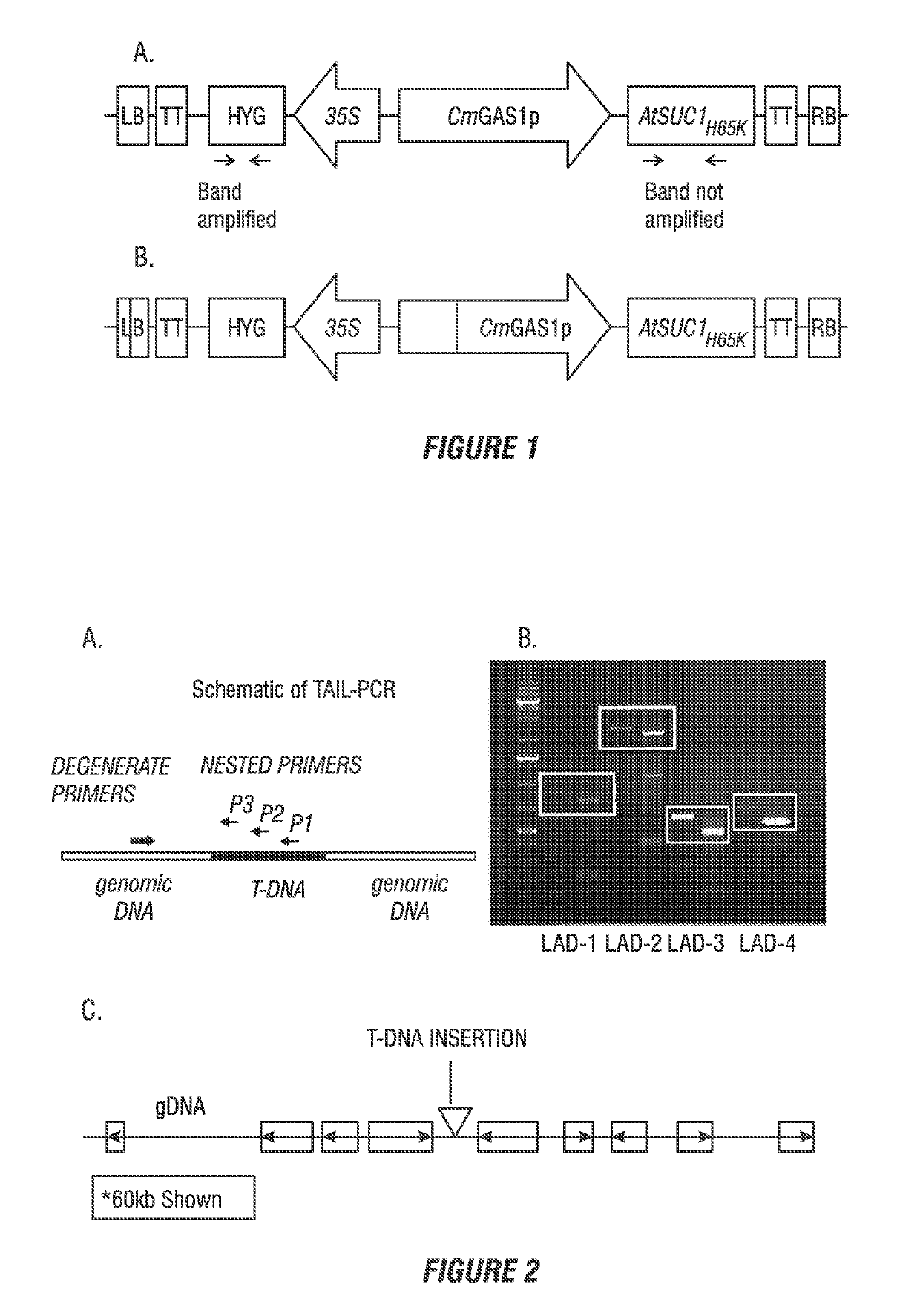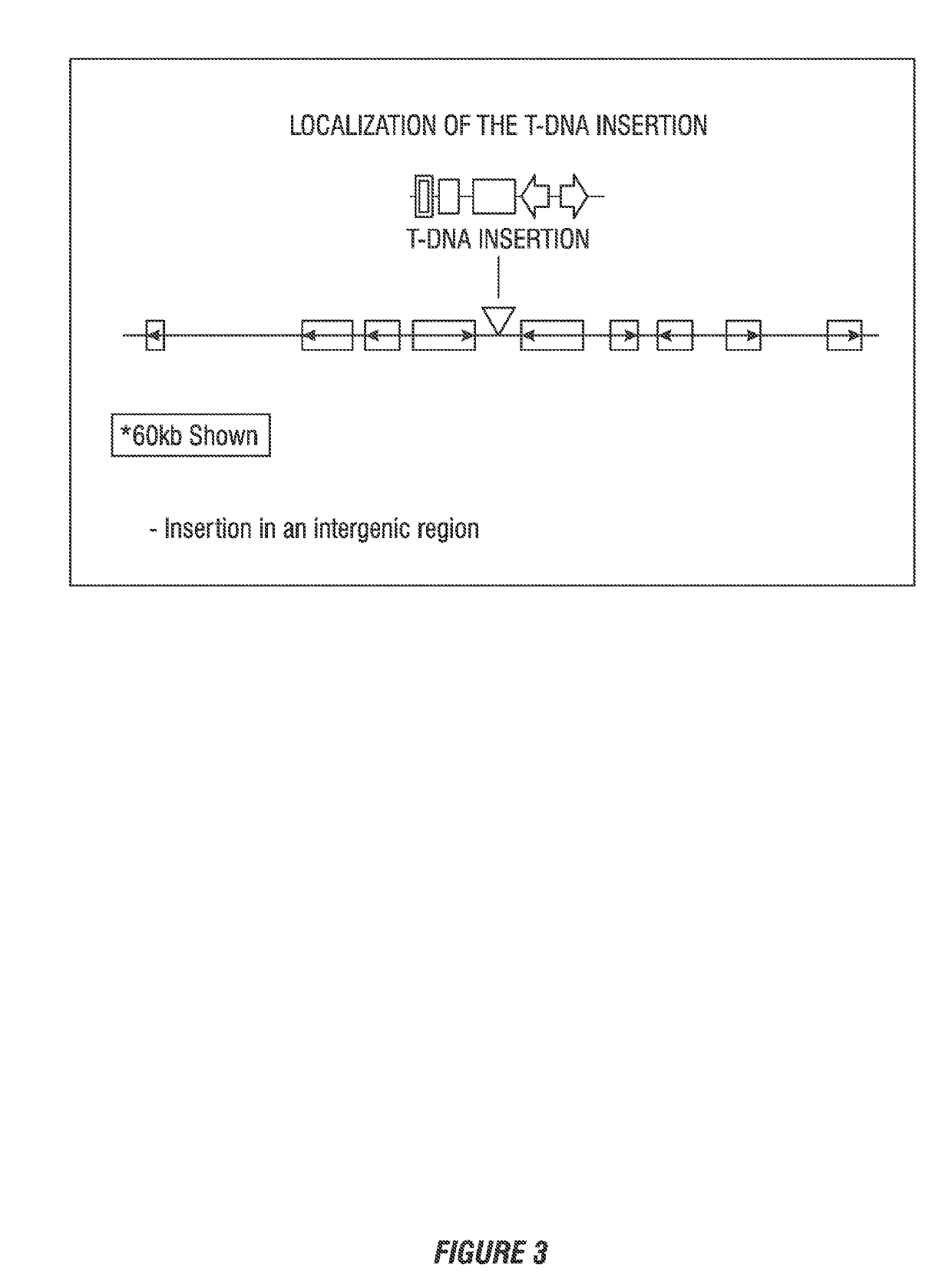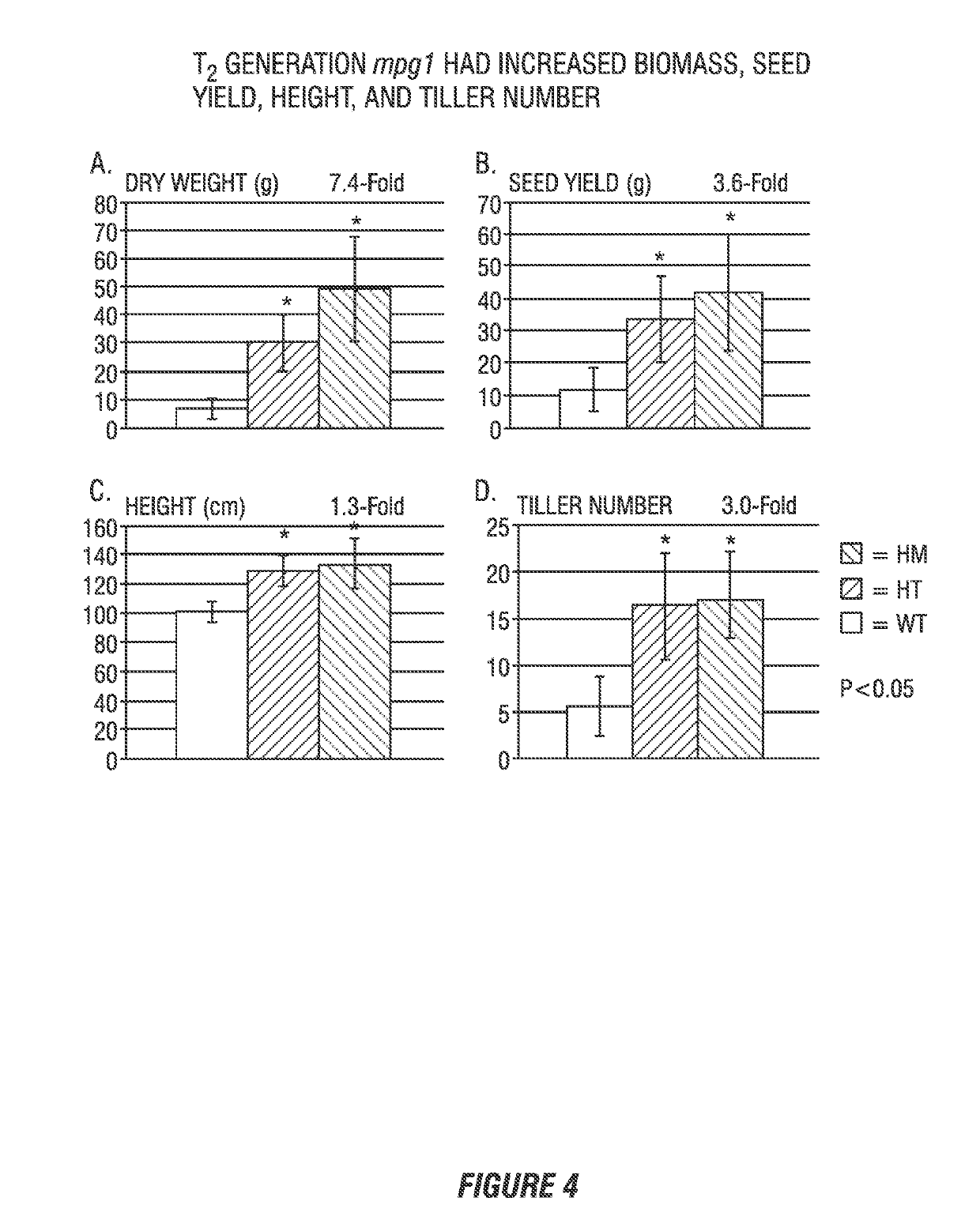Modulation of rice mpg1 activity to increase biomass accumulation, grain yield, and stress tolerance in plants
a technology of mpg1 activity and rice, applied in the field of molecular biology and plant genetics, can solve the problems of laborious and slow breeding techniques, significant slowing of yield increases, etc., and achieve the effects of improving grain yield, increasing abiotic stress tolerance, and improving performan
- Summary
- Abstract
- Description
- Claims
- Application Information
AI Technical Summary
Benefits of technology
Problems solved by technology
Method used
Image
Examples
example 1
Identification of a Gene that Makes Plants Gigantic-1: Characterization of Mpg1, a Novel Mutant of Rice
[0262]To aid in the production of stable energy, plant lignocellulocic material is currently being used to generate biofuels. To make this system more efficient by increasing plant biomass, a specific T-DNA expression cassette utilizing a gene involving sucrose transport was engineered. FIG. 1A. Through the screening of numerous transgenic plants, we discovered a single plant that was noticeably larger than its counterparts. Genotyping regions of the insertion revealed that only a portion of the T-DNA expression cassette was inserted FIG. 1B but the insertion did not contain the gene of interest pertaining to sucrose transport. The T-DNA insertion was found to be bi-laterally truncated, only containing the selective marker (hygromicin—15-071 resistance gene) and a portion of a companion cell specific promoter. Thus, the increased biomass phenotype was the result of the cassette ins...
example 2
[0268]It was decided to change the soil medium and fertilizer to create more optimal growth conditions for the rice plants, due to the possible salt accumulation and pH instability. This would allow for growth of plants in (non-stressed) environments. An additional T3 generation was grown in a growth chamber to try and reduce any potential influences on the plants.
[0269]The HM and WTs alike were noticeably healthier in appearance and were much larger than preceding populations.
[0270]When assessing the average biomass accumulation amongst the first few experiments where we now believe the plants were under stressful growth conditions and that of the plants grown in optimal conditions, it would suggest that stress-resistance of the mutant plays a role in the degree of the phenotype. The plants grown in optimal conditions were able to produce significantly more dry biomass then those stressed, however the differences in biomass and yield between WT and HM mpg1 plants were greater in st...
example 3
Ratooning
[0280]Ratooning is the ability for a plant to regenerate new panicle-bearing tillers after a harvest (cutting of culms at the base of the plant). Ratooning is important for strategic crop management of rice procuction allwoing for fundamental increases in productivity. Benefits include shorter growth duration, multiple harvests per season, works well with late season tempeature and irrigation practices, and lower production csots (less labor intensive). Ratooned tiller develop form basal axillary bids. These remain within the stubbl of the harvested crop plant. (at crown).
[0281]MPG1 plants have increased ratooning ability. Data was accumlated on a population of mpg1 plants (population size 11 WT, 34 HT, 25 HM). The results showed that mpg1 plants had incdesased tiller accumulation post harvest, increased plant height, increased plant girth post harvest and incrased palnicles post harvest.
[0282]FIG. 47 shows that mpg1 plants have increased tiller accumulation at 41 days post...
PUM
| Property | Measurement | Unit |
|---|---|---|
| temperature | aaaaa | aaaaa |
| temperature | aaaaa | aaaaa |
| pH | aaaaa | aaaaa |
Abstract
Description
Claims
Application Information
 Login to View More
Login to View More - R&D
- Intellectual Property
- Life Sciences
- Materials
- Tech Scout
- Unparalleled Data Quality
- Higher Quality Content
- 60% Fewer Hallucinations
Browse by: Latest US Patents, China's latest patents, Technical Efficacy Thesaurus, Application Domain, Technology Topic, Popular Technical Reports.
© 2025 PatSnap. All rights reserved.Legal|Privacy policy|Modern Slavery Act Transparency Statement|Sitemap|About US| Contact US: help@patsnap.com



